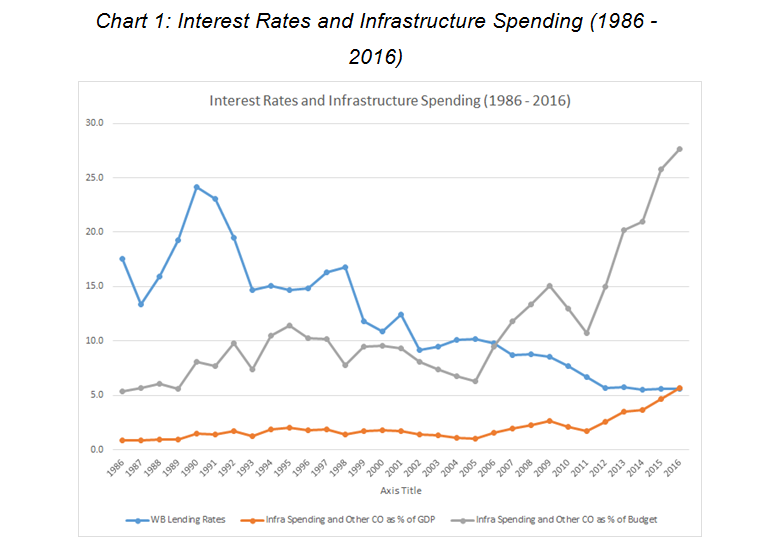
To the officials of the Italian Chamber of Commerce in the Philippines (ICCPI), executives of the EU-Philippines Business Network (EUBN), fellow workers in government, esteemed guests from the construction and business sectors: good morning.
Today, I wish to share with you the most ambitious infrastructure program in modern Philippine economic history. “Build, Build, Build” is an important strategy of the Duterte Administration to secure rapid growth and equitable development in the medium-term.
Infrastructure Development in the Duterte Administration
You see, this government has lofty goals for our economy and our people. For 2017, we want to achieve economic growth of 6.5 to 7.5 percent. We will ramp this up to 7 to 8 percent from 2018 to 2022 as our policy reforms gain traction. More importantly, we plan to reduce poverty to 14 percent by 2022.
In this framework, we can carve out the role of infrastructure in the wider socio-economic agenda of the Administration. In terms of economic activity, infrastructure will open up numerous economic opportunities given the improved accessibility between cities, regions, and provinces. This will greatly cut the cost of doing business and inspire investors to put their hard-earned money on the Philippine economy. As you know, entrepreneurs hate high transaction costs. Addressing the traffic situation and enhancing connectivity will only make the Philippine economy more competitive.
By linking lagging regions to leading regions, we will also hit two birds with one stone: we decongest Metro Manila, while providing more opportunities to Filipinos outside the major urban centers. Funneling economic activity from growth centers to its peripheries will benefit all stakeholders. Sometimes, it only takes a bridge or a highway to revitalize a local economy.

Economic conditions change, and now is the best time to invest heavily on public infrastructure. You can see here lending rates by the World Bank (interest rates) vis-a-vis infrastructure and other capital outlays: (i) as a share of GDP and (ii) as a share of the Budget.
In my first stint in DBM under the [Corazon] AquinoAdministration, interest rates were sky high. The lending rates then were easily four or five times the rates offered to us at present. Add this to the Philippine economy’s indebtedness at that time, and it made infrastructure spending difficult.
Meanwhile, during the Estrada Administration the Philippines was just coming out of the Asian Financial Crisis which put a strain on the economy’s finances.
It’s only now in a regime of low interest rates that the government has been able to bankroll its infrastructure objectives. It is obvious from the chart above that as interest rates dipped, infrastructure spending both as a share of GDP and as a share of the budget finally edged up. And you see towards the end of the chart that it has finally reached the recommended threshold of 5 percent of GDP, while also accounting for more than 25 percent of the Budget.
We will continue to take advantage of the favorable economic conditions as we embark on this lofty infrastructure plan. This will foster a more efficient and competitive economy with the promise of faster and sustained growth in the long run. In the short-term, our ambitious Build, Build, Build program will also generate immediate dividends such as the millions of jobs that will be created.
Do you know that “Build, Build, Build” will generate more than 1 million jobs annually over the next six years? On top of the 1 million jobs the economy is able to produce annually, that would be 2 million additional jobs every year to occupy Filipino workers.
It is for this reason that P847.2 billion has been allocated for infrastructure in the 2017 General Appropriations Act (GAA). We have never seen this amount of funding in the past 3 decades. For perspective, the 2017 infrastructure budget is equivalent to 5.3 percent of GDP. The Aquino Administration from 2010 to 2016 averaged a measly 2.9 percent of GDP.
And this is only a downpayment as we will continuously channel resources for infrastructure development. For the 2018 Budget, P1 trillion has been earmarked for infrastructure. This staggering amount is equivalent to 5.8 percent of GDP. This infrastructure budget is approximately equal to our National Budget 10 years ago (2007) which reached P1.126 trillion. See, I meant it when I said that “Build, Build, Build” is the most ambitious infrastructure program in recent Philippine history.
So much so that P8 to P9 trillion will be spent on public infrastructure from 2017 to 2022. Our infrastructure budget will go from 5.3 percent of GDP to as much as 7.3 percent of GDP. The heavy investments on infrastructure is a good first step in catching up with our ASEAN-5 neighbors. This is no hyperbole, the World Economic Forum ranks us dead last in overall infrastructure, road, and railroad infrastructure among the ASEAN-5 countries. Hence, It’s really about time that we modernize our infrastructure.
Legacy Infrastructure Projects
We have at least 75 big-ticket infrastructure projects to launch this “Golden Age of Infrastructure”. The pipeline of projects for “Build, Build, Build” alone is already 61 projects – and we are just in President Duterte’s first 12 months. These projects are openly accessible through the “Build, Build, Build” portal and the PPP Center pipeline of projects. We will build all forms of infrastructure facilities from trains, urban transit systems, BRTs, subways, highways, bridges, long and short, irrigation systems, classrooms, rural health facilities, and so on.
Some of the more exciting infrastructure projects lined up include the 581 km PNR South Long Haul that will run from Tutuban, Manila up to Legazpi, Albay and all the way to Matnog, Sorsogon. With an estimated cost of P151 billion (ODA), this railway will connect cities, seaports, and economic zones allowing for the faster movement of passengers and freight. We expect to kick-off construction by the third quarter of 2018 and to complete the project by 2022.
For legacy projects involving Metro Manila, we have the Mega Manila Subway that will connect the major business districts and government centers. It will run for about 25 km stretching from Quezon City, Pasig, Makati, Taguig, and up to NAIA in Pasay City. The feasibility study is currently being prepared with the help of JICA. I assume this must be music to your ears as the Japanese are experts in rail systems.
Then there’s the Mindanao Logistics Infrastructure Network (M-LIN). In line with our belief that growth should not be monopolized by Metro Manila, the M-LIN will develop an intermodal logistics system that will enhance the agribusiness competitiveness in Mindanao. With an estimated cost of P80 billion, it will connect Northern Mindanao, Davao, CARAGA, and SOCCKSARGEN.
I also have to mention the Tagum-Davao City-Digos segment of the Mindanao Railway. With an estimated cost of P32 billion, the 105 km segment of the larger 830 km Mindanao railway will ferry over 100,000 passengers daily.Construction is expected to start in the first quarter of 2018 and is expected to finish by third quarter of 2022.
You see, Mindanao has immense potential. If developed properly, it can supply the food requirements of the entire Philippines. So this is a step in the right direction as the government addresses the high cost of trade and transport in the region due to inadequate infrastructure.
Policy Reforms: Budget Utilization and Accountability
Beyond the huge funding and stacked pipeline of projects, the government is aware of concerns regarding “absorptive capacity”. We agree that the heavy investments on infrastructure will mean little if the funds do not translate into concrete output.
So allow me to share with you how government is not only “thinking differently”, but also “acting differently”.
From DBM’s end, we have installed numerous measures to streamline processes and expedite project implementation without sacrificing transparency and accountability
- From the Budget Preparation phase, we have made it a point that only “shovel-ready” projects will be included in the Budget. Experience suggests that poor planning leads to unnecessary delays and underspending. With the efforts of implementing agencies such as the DPWH and DOTr, combined with capacity-building initiatives of the technical staff in DBM and other oversight agencies, we have made significant progress in improving Budget Preparation.
- Technology will also be used to enhance the efficiency of project monitoring and evaluation. From a financial management perspective, the Budget Treasury Management System (BTMS) will support budget execution and budget accountability with a central database that feeds pertinent information. Hence, we will better track agencies which are slow in turning their budgets into actual outputs.
- By geo-tagging projects, especially the large infrastructure projects, we will eliminate “ghost projects” and ensure that projects are done on time. This will be done through drones and digital maps. For instance, the DPWH already has the Project and Contract Management Procedures Application (PCMA) to do just that.
- In order to quicken procurement, we have issued the revised Implementing Rules and Regulations (IRR) of the Government Procurement Reform Act (RA 9184). This is in response to the observations that procurement issues have delayed budget implementation. The revision will quicken the procurement process, make it less vulnerable to arbitrary delays, and streamline the documentary requirements without sacrificing the integrity of the process. For instance, we have relaxed the rules in signing, sealing, and marking of bids. In the past, procuring entities would disqualify bidders because one of the hundreds of pages of the bid was not signed. This has led to delays and anomalies.
- Looking ahead, the Budget Reform Bill will mandate a cash-based budget rather than an obligation-based Budget. You see, as the name suggests, obligations are intentions and not expenditures. Clearly, the Budget Reform Bill is necessary for more disciplined execution of the Budget.
Policy Reforms: PPP
Lastly, let me share some innovations with Public-Private Partnerships (PPP). The Duterte Administration is now open to unsolicited proposals, subject to Swiss challenge. This will harness the creativity of the private sector and contribute to the infrastructure objectives of the government.
Next, there’s the “hybrid” PPP model where the government selects, finances, and constructs the project through public bidding while leaving the Operations and Maintenance to the private sector. I will leave this topic to Secretary Pernia, but I’m really supportive of this scheme as it allows government to take advantage of its access to cheaper loans. With stronger relations with China, Japan, and other regional neighbors, we expect projects to roll-out at a speedier pace compared to traditional PPP.
Next, on the matter of awarding a project to a proponent who can offer the highest ‘premium’. We find this modality unacceptable. It is taxation without representation. It is guaranteed that the services will be more expensive than what they ought to be.
Between offering Operations and Maintenance to the private sector and welcoming unsolicited proposals, I believe that our infrastructure program does not crowd out private firms and investors. This is just a result of government striking the balance between cost-effectiveness, timeliness, risk-sharing, and project quality, among other considerations. I think you will agree with me that the ultimate objective really is to upgrade and modernize our crumbling infrastructure at reasonable prices.
Conclusion
As we embark on this challenging yet highly rewarding journey, I hope that the private sector would support our “Build, Build, Build” program. Our policy and implementation reforms are important, but they are not enough on their own. We need allies who understand the government’s objectives and are willing to share their efforts and expertise.
So join us in building a better, safer, fairer, wealthier, greener, more beautiful Philippines.
Thank you.
Delivered by Secretary Benjamin E. Diokno on July 6, 2017







